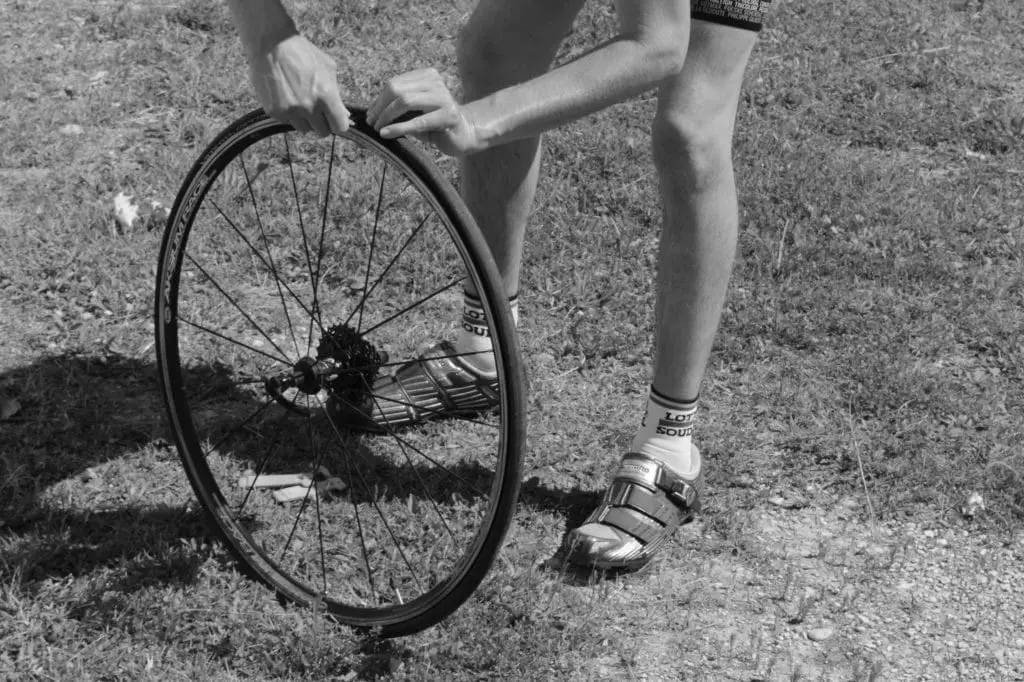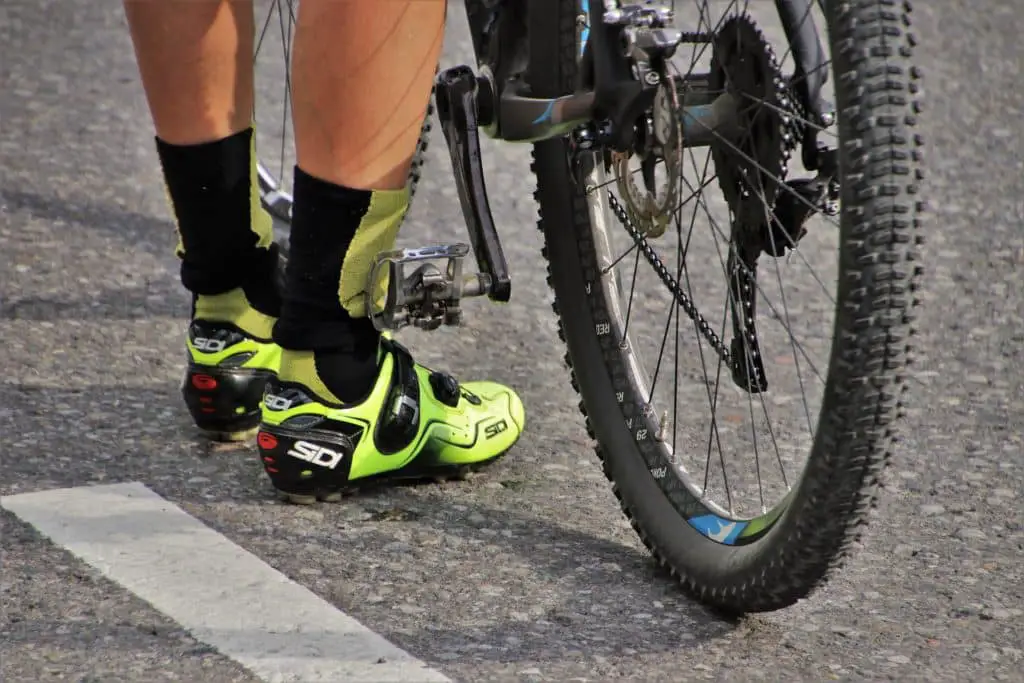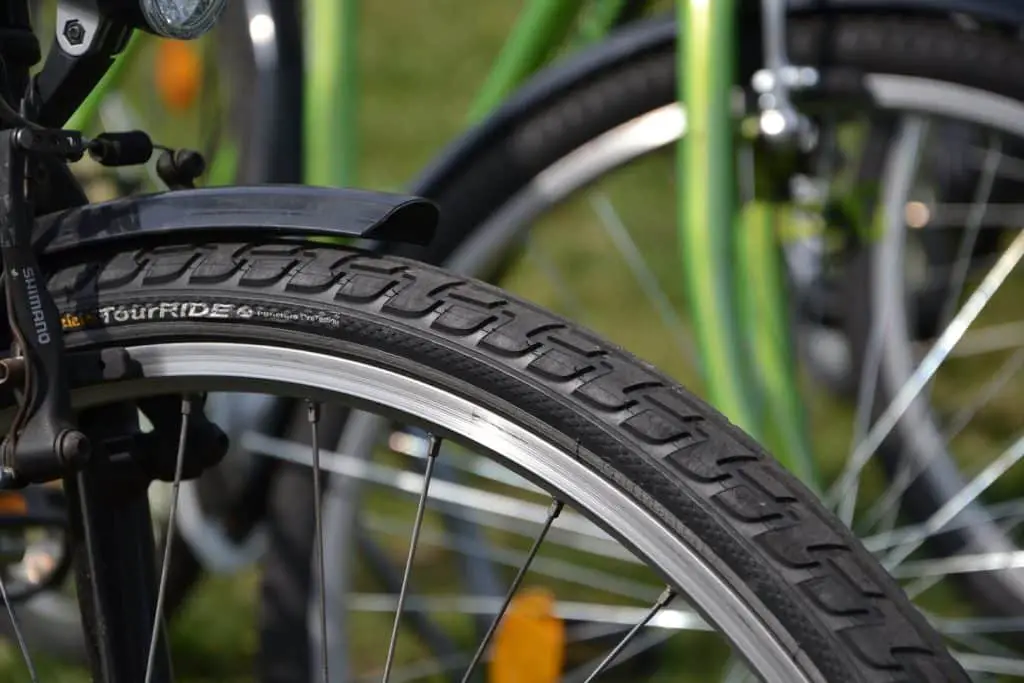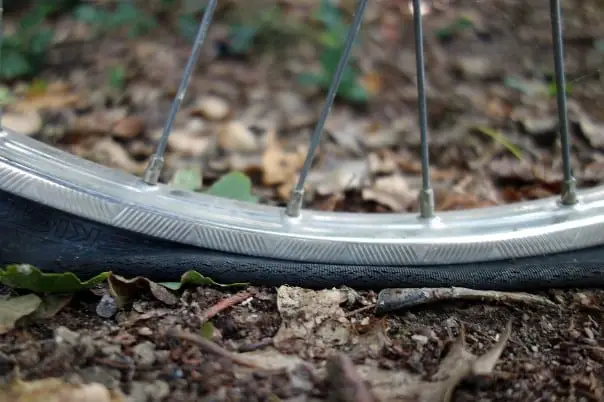Does your bike tire keep going flat? You are not alone! Check out some of the reasons for this occurrence and how you can prevent them in this quick post.
Getting a flat tire isn’t anything new, but a frequent occurrence can be frustrating. This is particularly true if it happens at the most inconvenient time. This post will help you figure out why your bike tire keeps going flat, even when it doesn’t seem to have a visible puncture.
Why Does My Bike Tire Keep Going Flat?

There are many reasons for frequent flats, with the most common being slow leaks. Sometimes, you may not notice any puncture or hole in your tire, but damaged or failing valves can make your tires lose air.
Also, narrow tires tend to go flat faster than wider ones. That means you may need to pump air into them more frequently – at least once a month.
Other reasons for frequent flats include:
- Damaged rim tape, tube, and tire liner
- The tire is worn out beyond repair
- Uninspected damage that can cause slow leaks
- Bumping into hard objects with low tire pressure
- Not caring for your tires properly
More: Maxxis Ardent Review: Is It Worth It?
Why Do Bike Tires Go Flat When Not In Use?

Bike tires get deflated if you don’t use them for a long time because the tubes are permeable. Air can escape through the valve seal and tubes very slowly. The result is a flat tire, regardless of whether you don’t use it.
Bike tires will lose air somewhat faster when the weather is hot or the bike is stored in a hot place. That’s because the pressure in the tubes will go high and make the air escape quicker.
If you’re wondering why your bike tire keeps going flat in cold weather, it is mainly because the tire’s air molecules slow down and contract or become denser when the temperature drops. As a result, the tire will lose pressure and go flat, even when not in use.
In tubeless bike tires, such as the ones found on many MTB tires, you can have a flat when the bike is not in use but it is probably due to sealant leaking.
More: How Much Should Bike Tire Pressure Be?
Is It Normal For Bicycle Tires To Lose Air?
Yes, it is normal for bicycle tires to lose a small amount of air or pressure every week. This happens even if the tires and tubes are not damaged or punctured. You can expect your bike tire to lose around 1 to 40 psi pressure weekly.
The air loss is a bit slower in wider tires than narrow ones. Also, the type of inner tube and the quality of the tire can affect the rate of air loss.
Can a Bike Tire Go Flat Without a Hole?

The straightforward answer is yes, it is possible for bike tires can go flat without a hole. One of the many reasons your bike tire keeps going flat without a visible puncture is slow leaks. Air can leak from the bead or valve stem.
It is also possible to have leaks due to sharp objects embedded into the tire. Your bike tire can go flat without a hole if you hit a sharp or hard object with low tire pressure. It is also possible to have a flat if “burping” is triggered by a landing from a high jump or excessive heavy-off road riding.
More: Clincher vs Tubular: Which Is Better?
How Do I Stop My Bike Tire From Going Flat?
Detecting and fixing flats is great, but it is usually best to avoid a flat in the first place. Here are some suggestions to help you prevent your bike tire from going flat too frequently:
- Regular tire inspection: Develop the habit of checking your tires regularly. This will help you to uncover any embedded objects or debris before they cause any serious damage.
- Use self-sealing inner tubes: If possible, consider using a self-sealing inner tube. The sealant in the tube is an excellent solution for preventing flats from happening.
- Clean the tire valves: Remember to keep the valves clean, as that can go a long way to prevent problems. Make sure to keep the cap on your valves. This will reduce the chances of dust and dirt contamination.
- Use the correct nozzle head: Make sure to use the correct nozzle head when putting air in your tires. Avoid forcing a wrong size nozzle head into your valve. Also, you want to be careful when you connect the nozzle head to your bike tire valve, even if it is the correct size. The goal is to prevent damage that could lead to slow leaks.
- Choose wider rims: If possible, go with wider, carbon fiber rims. These models are designed to withstand harsh riding conditions and can resist deformation even with hard impacts and heavy loads.
More: Best Energy Gels for Cycling [Review and Buying Guide]
Can You Use Fix A Flat On A Bike Tire?
Tire sealants, such as Fix-a-Flat are okay to use in an emergency. For example, the sealant comes in handy if you get a flat in the middle of nowhere. But if you discover a flat tire when you are still at home, that’s usually not a pressing situation. In such cases, you should fix the flat tire using conventional methods.
Keep in mind that some sealants, including Fix-a-Flat, can potentially damage your bicycle tire, especially if there is a layer of foam on the treaded area. The foam on these types of tires (known as quiet tires) will absorb the sealant and prevent it from reaching and fixing the puncture.
Fix-a-Flat can also cause vibrations in quiet tires and it is impossible to remove the sealant from the foam. This means you may have to replace the tires.
Equally, you shouldn’t use Fix-a-Flat in run-flat tires. These types of tires can still work for a short period even after a puncture. Using the sealant on run-flat tires can result in the same issues as quiet tires.
Remember to remove Fix-a-Flat from your tire within 100 miles of riding or three days, whichever comes first.
Can You Put Slime in a Bike Tire?
Yes, you can put slime tube sealant in a bike tire to prevent and repair a flat. However, it is not recommended to do so if there is existing damage.
If you use Slime in a bike tire, remember to remove it within two years. Allowing the sealant to remain in your tire for more than two years can compromise the integrity of your rims.
More: Do All Bike Tires Have Tubes? [Complete Guide]
Do Tubeless Bike Tires Go Flat?
Flats are rare on tubeless bike tires because the sealants inside the tires will quickly seal cuts and small holes to prevent deflation. However, it is not entirely impossible to get a flat, even with a tubeless setup.
Do Road Bike Tires Go Flat Easily?
Flats are quite common with road bike tires because the thin tubes inside the tires are wrapped around sharp rims. Having constant contact with a wide range of terrains at high speeds combined with the riders’ weight is the perfect recipe for easy flats.
Conclusion
Flats are normal for all cyclists, but if they keep occurring rather frequently, it could be an indication that the tires are old and need replacement, or you are not inspecting them regularly. Thankfully, this post has shown you how easy it is to prevent frequent flats.




